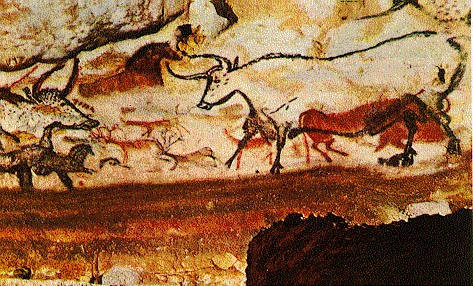
? |
|
Hall of Bulls
- Lascaux, France. 15,000-13,000 BC
- Paleolitchic cave painting
- Medium: paint, pulverized charcoal and minerals.
- The proportions are not exact, they were more concerned with recreating the most characteristic features to gain the complete essence of the image as opposed to reality. Main concern was representing the animal, not locating them to a specific place.
- They painted large powerful creatures: possible a pre-hunting ritual so that the hunters could spiritually have a successful hunt . Trying to gain some control over nature
|
| |
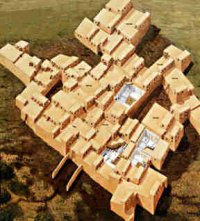
? |
|
Catal Huyuk
- Turkey, 6000-5700
- During the new stone age, where people became more agrarian and domesticated animals. Cultivated farms, instead of hunting and gathering.
- Houses made out of mud bricks -- early model of an urban city.
- Houses shared common walls and traveled ontop of the roofs
- Every 4 houses share 1 shrine: held clay bull horns
- wall murals depict human figures as a composite front and profile views. Aims to explain a narrative of human dominating over animals.
|
| |
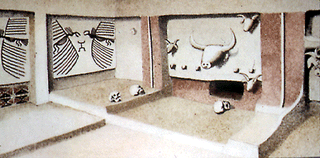
? |
|
Catal Huyuk Shrine
- Every 4 houses share 1 shrine: held clay bull horns |
| |
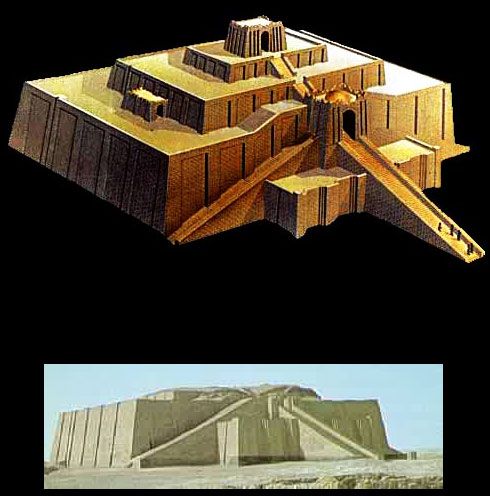
? |
|
Ziggurat
- Ur: 2100 BCE
- A series of terraces to resemble an artificial mountain.
- Outer shell: fire brick & inner shell used mud brick
- At the very top was a temple --- Gods are in heaven and when one is at the top of the temple he is at a good meeting place where humans and deities can meet.
|
| |
|
Cuneiform |
|
- Sumerian art, circa: 2100 BCE
The earliest known writing system that used wedged shaped signs. Made by the Sumerians, specifically created by the priests.
- Seen on the statue of Gudea
|
| |
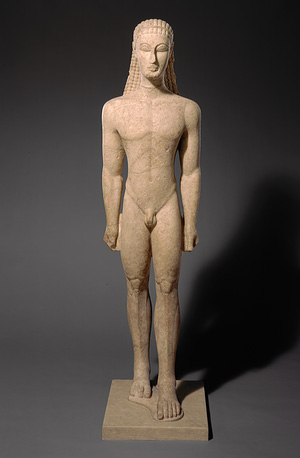
? |
|
Kouros ("youth")
- Archaic Period, 600 BCE (Greek art, archaic period)
- Adopted the Egpytian pose for standing figures
- The first life sized Greek statue
- Made of marble
- Rigid frontal with the left foot advancing and fists closely to its side
- Different from egyptian art: 1) Greeks liberated their figures from the stone blocks. Egyptians were obsessed with permanence whereas the the Greeks were interested in motion. 2) Kouros is nude. The greek youths are formally indistinguishable from the Greek statues of their deities.
- The sculpture's features show the working method of the making of independent features on all four sides of the block of marble. It is not just two demensional.
- Suggests the the reproduction of rounded flesh and muscle of the human body
|
| |
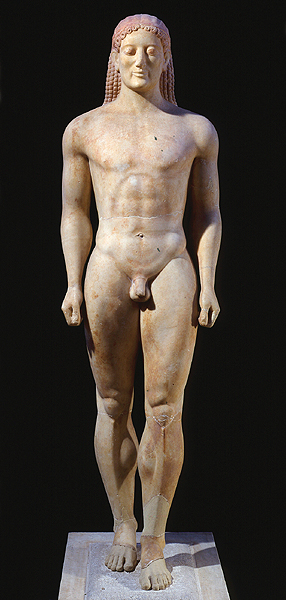
? |
|
Kroisos
- Circa 530 BCE (Greek art, Archaic period)
- Statue is a grave marker to commemorate the life of man named Kroisos.
- Stance is similar to the early kouros, but there is an increased naturalism in its proportions, more rounded face, torso, and limbs
- Kroisos is smiling- the archaic greek indication of life
- Hair is not stiff, but falls naturally on his back
- Face is now proportional to its body
- Kept the natural color of the stone to represent flesh, but painted the lips, hair, and drapery in encaustic (pigment mixed with hot wax that was applied to the statue)
|
| |
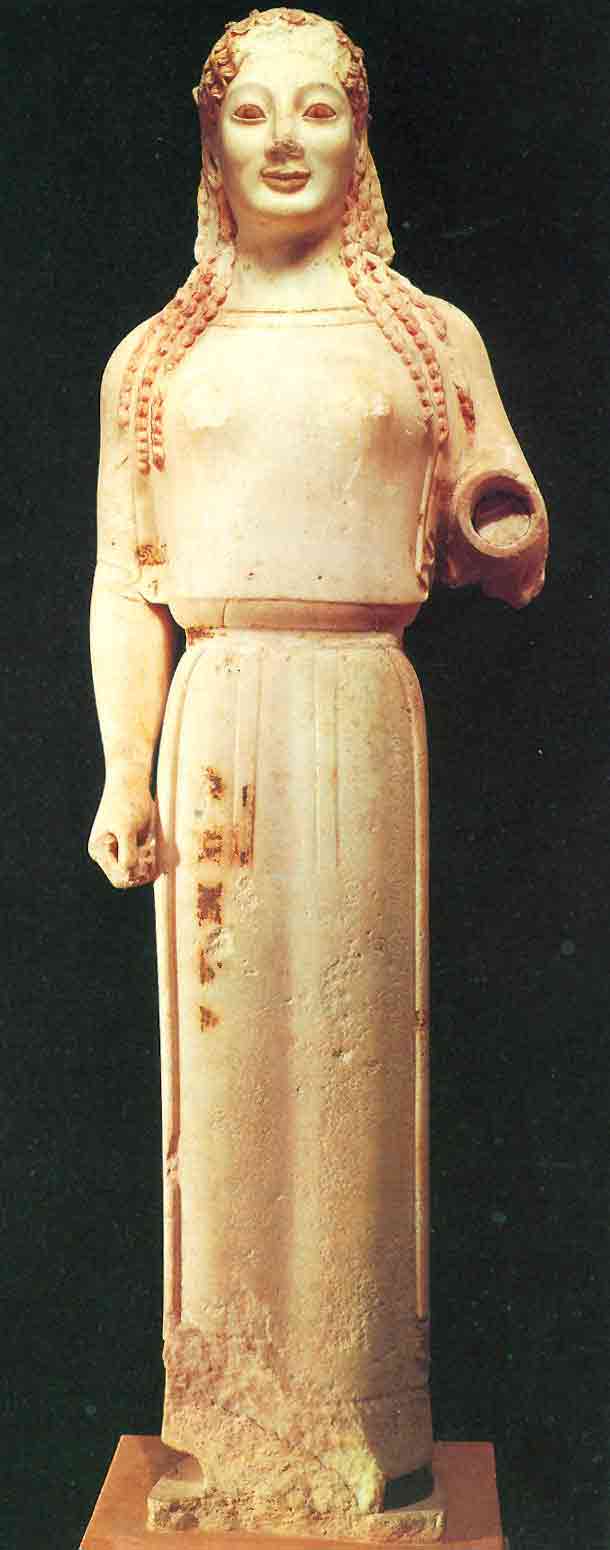
? |
|
Peplos Kore (not important)
- Greek archaic era, circa 530
- Wears a peplos - a simple long woolen belt that gives the female figure her columnar appearance.
- Her missing arm is extended forward, differing from the strick compressed limbs of the egyptians
- She once held in her hand an attribute that would had signified that she is a maiden or, some have suggested, a goddess.
|
| |
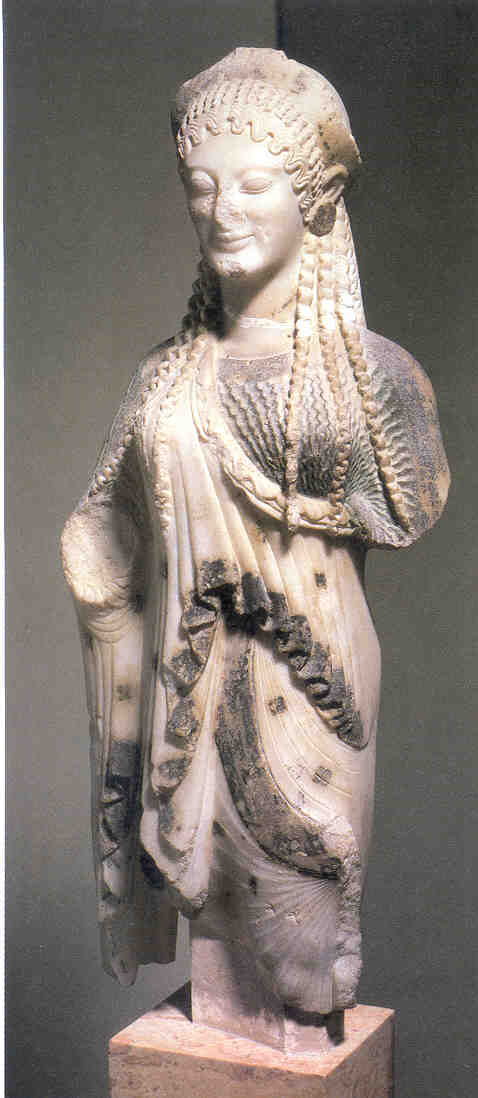
? |
|
Kore from Chios
- Archaic art from Greece
- circa 510
GET MORE INFO
|
| |
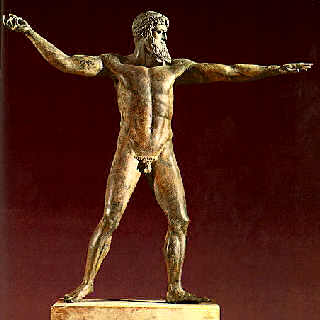
? |
|
Poseidon/Zeus
- 470-450 BCE of the Greek Classical period
- Made of bronze
GET MORE INFO
|
| |
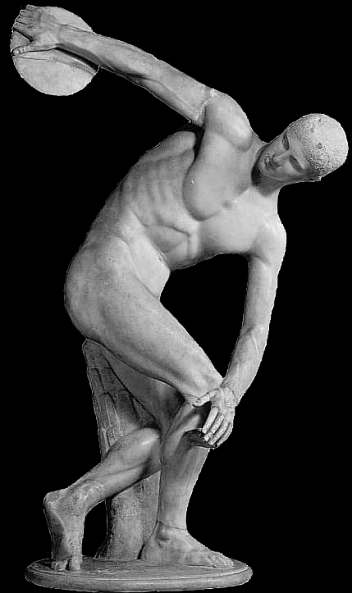
? |
|
Discobolos (Disk-thrower) by Myron
- Greek archaic period, circa 450
- Made of marble a represents athletic sculpture
GET MORE INFO
|
| |
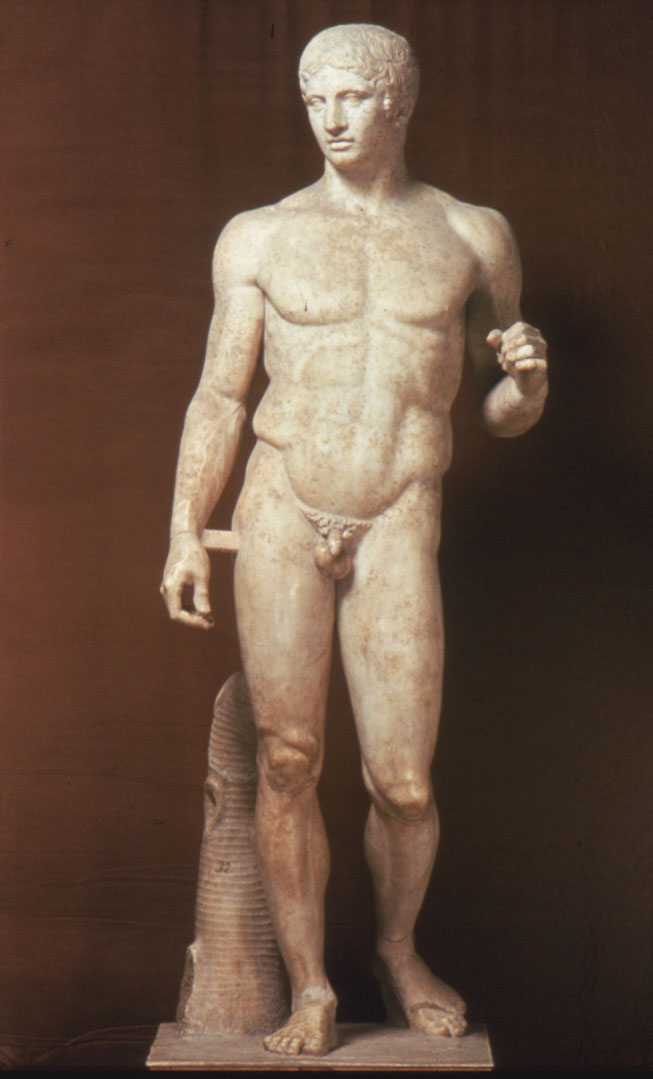
? |
|
Doryphoros (the spear bearer) by Polykleitos
- Greek [high] classical art era, 450-440
- Polykeitos aimed to portray the perfect man: imposed order on human movement and a system of cross balance for all parts of the body.
- More pronounced contrapposto and further imposed movement to make it more beautiful and to perfect it
- The straight hanging arm echos the right stand leg to make a columnar stability needed to anchor the left side's dynamically flexed arms
- Head turns to the right while his hips turn to the left
- Asymetrical balance and a motion while at rest = harmony of opposites
- Polykleitos was influence by Pythagoruas: discovered harmonic chord of the lyre are expressed as ratios of whole numbers. Followers believed in his underlying harmonic proportions cound be found in nature and that beauty resides in harmonious numerical ratios
|
| |
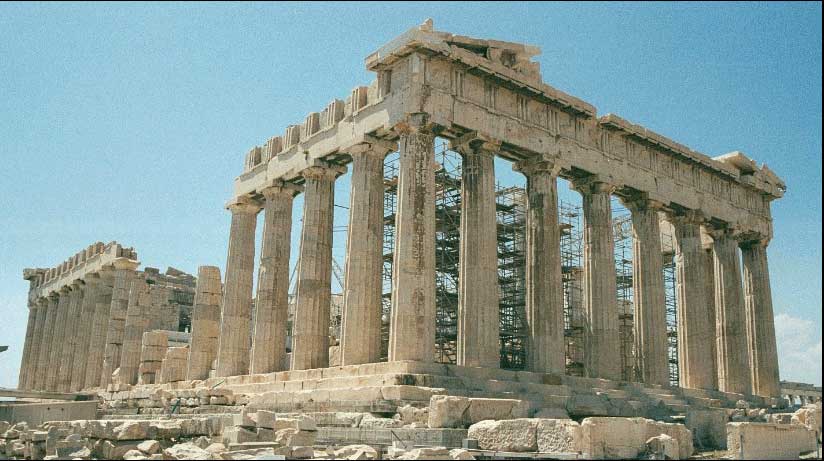
? |
|
Athenian Acropolis
- Rebuilt after Persian sack, Classical era, ca. 480 BCE
- Destroyed by the Persians and kept as a war monument
- Oriented toward the exterior: exterior meant as the backdrop for worship. The aesthetic is represented on the exterior.
|
| |
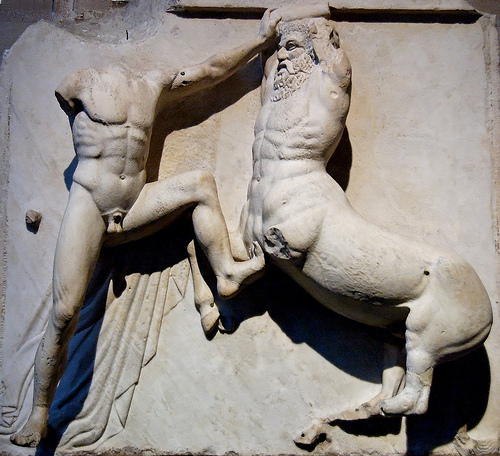
? |
|
Lapis versus the Centaurs (circa 447-438)
- At the metope of the Parthenon
- Two figures represented, depicts mythological battle
- Represents good versus evil, the civilized Greeks versus the barbarians
- Is an allusion to the Greek victory over the Persians
- Lapis: has a beautiful, calm face. It is ideal and governed by reason. In contrast the Centaur's face is contorted and twisted with emotion --> is irrational and uncivilized.
|
| |
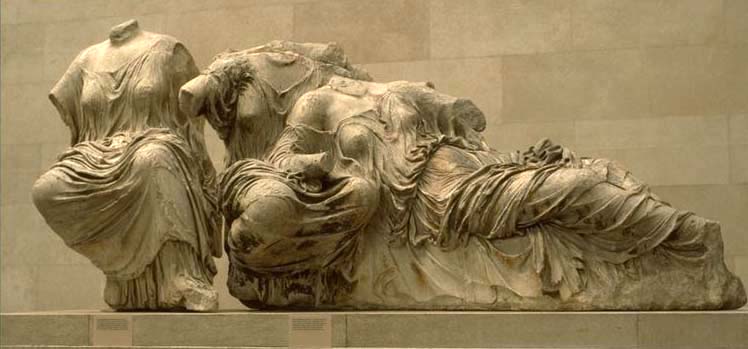
? |
|
Three Goddesses
- Classical Era, ca. 438-432
- Frieze pediments at the front of the temple
- Drapery is realistic. Reclined and natural poses.
|
| |
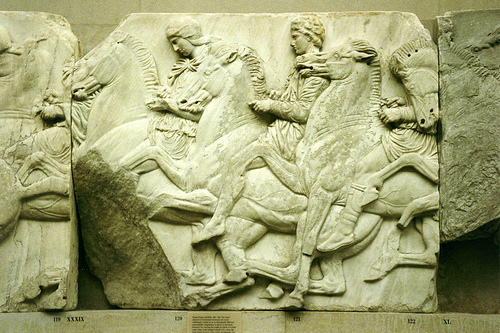
? |
|
Panathenaic Festival Procession
- Classical era, ca. 447-438
- Every four years they have a festival and bring sacrifices and gifts to the Acropolis temple to honor their city goddess's birthday.
- Horse riders: their proportions are bigger and exaggerated compared to the horses.
- Communicates the processions acceleration and declaration.
|
| |
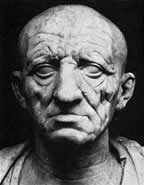
? |
|
Portrait of Old Man
- Roman art, ca. 50 BCE
- Constitutes the veristic style: (super realistic representation that stray from ideal depiction)
- Romans were very proud of the family likeness of their ancestors. Portraits were ways that the patrician class elevated its position in society
- All portraits were done of men in advanced age-- the aesthetic was in wisdom, age, and distinguished family.
- This bust has many rises and falls and bulges and folds on his face.
- Wanted to make a statement about the personality: serious, experienced, determined, loyal to family and state-- virtues greatly admired during the Republic
|
| |
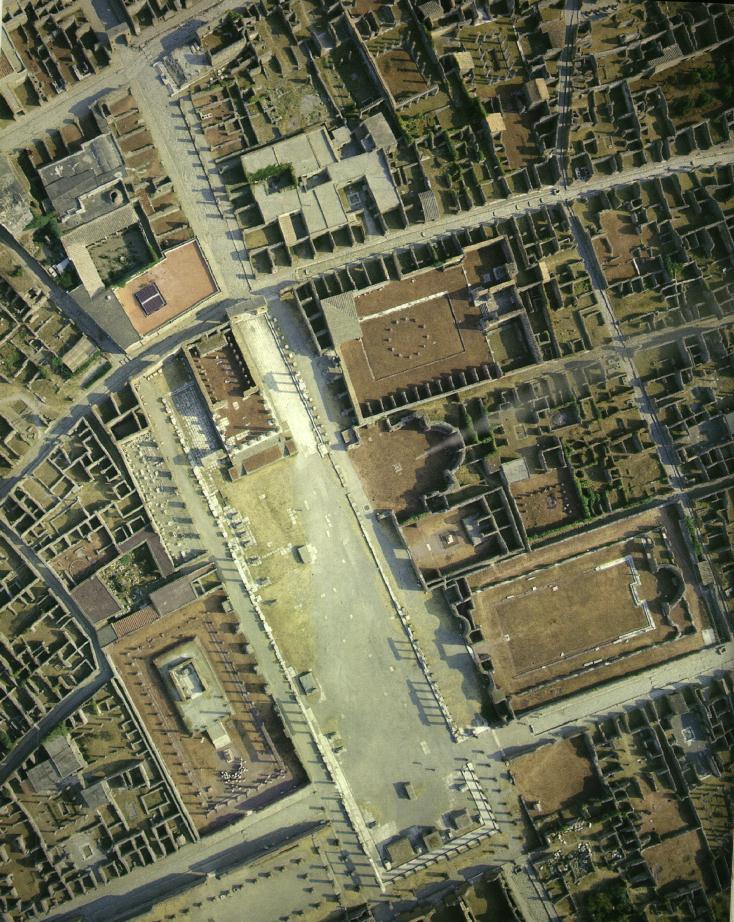
? |
|
Pompeii Forum
- 2nd century BCE, Roman art
- Was the center of civic life in any Roman town. Lies at the heart of the original town
- Inspired by Hellenistic architecture and has two-story porticos (colonnades) on threes ides of the long and narow plaza.
- At the north end was a temple constructed for Jupiter
- When Pomepeii became a colony to Rome, they converted it into a Capitolium (a triple shrine dedicated to Jupiter, Juno, and Minerva)
- Constructed out of tufa and covered with white stucco: different siting that Greek temples (which stood in isolation and could be approached and view from all sides)
- At the southwestern corner was the basilica: the town's administrative center and housed the law court: it is also long and narrow with two story internal columns
|
| |
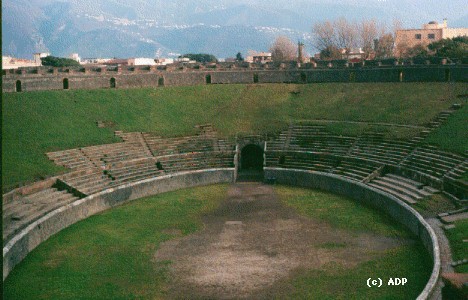
? |
|
Pompeii Amphitheater
- 70 BCE Roman Art
- Staged bloody gladiatorial combats and wild animal hunts in the arena
- Greek theaters were situated in hillsides, so supporting an amphitheater's continual elliptical cavea (seating area) required building an artificial mountain.
|
| |
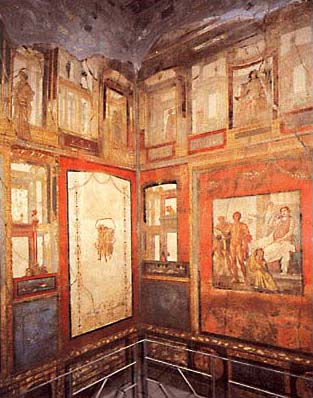
? |
|
Ixion Room, House of Vetti, Pompeii
- 70-79 AD
- Framed panel paintings and
|
| |
|
? |
|
Peristyle and Atrium of a standard Roman house |
| |
|
? |
|
Augustus as General
- Roman art: 20 BCE
- Portrait of Augustus from primaporta
- Imperial portraits are carefully crafted political images that don't necessarily depict likeness
- The Roman use of art was to manipulate public opinion. Usually done by portraits and historical relief sculptures much like the contemporary political campaign
FIND MORE
|
| |
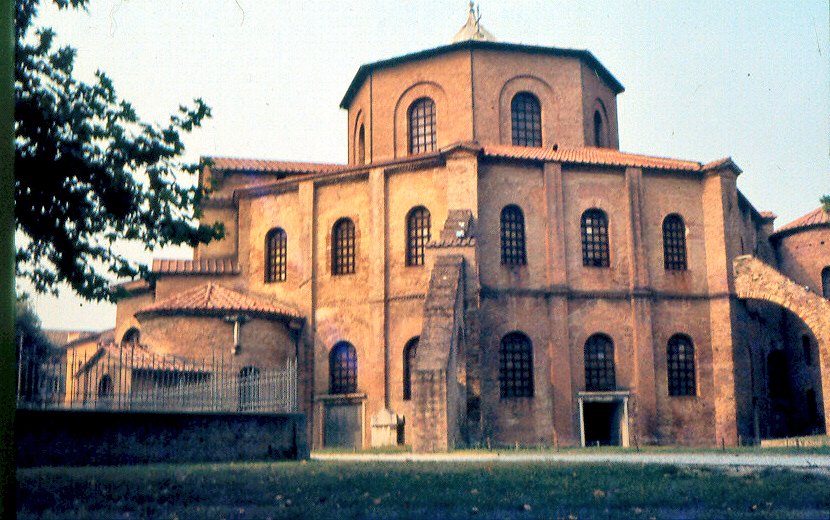
? |
|
San Vitale, Ravenna
- Byzantium art, ca. 526-547
- During the Justinian reign, the town cite enjoyed unparallel prosperity and its culture became an extension from constantiople
- It's art clearly denotes the transition from the Early Christian Art to Byzantine style
- Dedicated to Saint Vitalis, a martyr.
- San Vitale is a unique church, is not a basilica. Features two concentric octagons
- Light is filtered through alabaster-paned windows and plays over glittering mosaics and marble. It also has complex wall and vault shapes.
- Has a two story ambulatory since it is made from the central space's large piers
|
| |
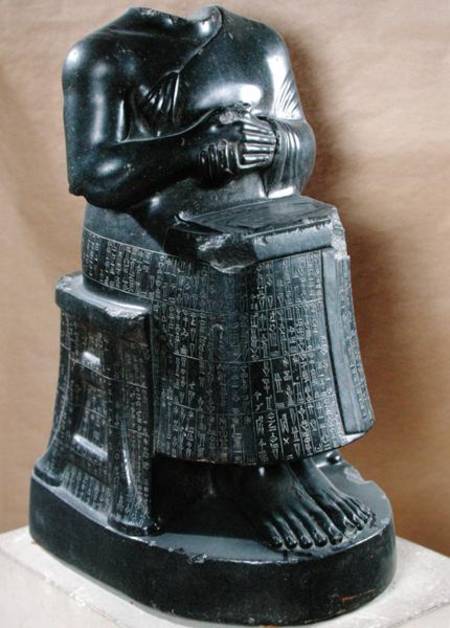
? |
|
Statue of Gudea- Sumerian Art, ca. 2100 BCE- Gudea was a sumerian city ruler, and as a city ruler he was seen as the official intermediate between humans and gods.- The stone was transported from Egypt- The figure's big hands, arms, and feet are accentuated- His eyes are big and wide --> represents his divine nature and his ability to see. His openness to the soul. Also his hands are clasps in prayer. The statue will pray and worship at the temple when the actual Gudea is not there: implies a perpetual prayer and worship.- On his lap is the earliest ground plan for building a temple. --> it was god sent to construct a bigger and better plan for the gods in order to get out of the Tigres drought. |
| |
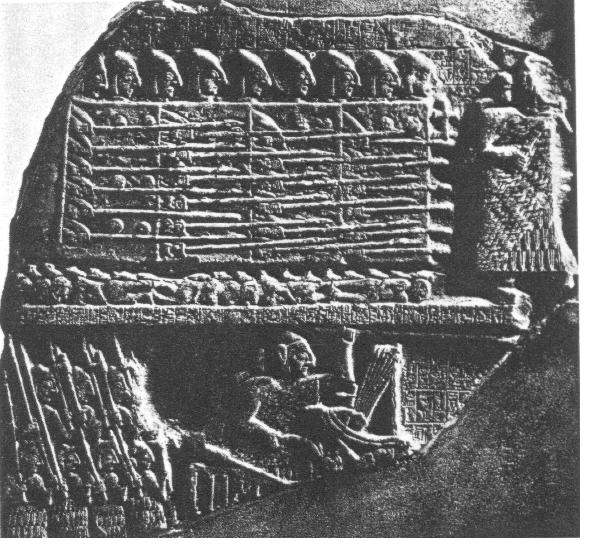
? |
|
Victory Steele of Eannatum (Steele of Vultures)- Sumerian art, ca. 2600-2500- record of an actual historical war because there were foreigners who were stealing water from their city. (water is a scarcity from that region) - Divided into registers - Able to tell which one Eannatum is due to the hierarchical scaling. He is significantly larger than the rest of the figures represented. - Figures are also rendered in composite view which aims to represent the body parts as their most characteristic view points.- Eannatum's army is trampling over their enemies (literally marching over them) presents their power over their enemies- In the Vulture's register: vultures are carrying off the enemies by their decapitated heads. |
| |
|
Steele |
|
An upright piece of stone with inscription on it.
Example: Steele of Hammurabi and Steele of Eannautum |
| |
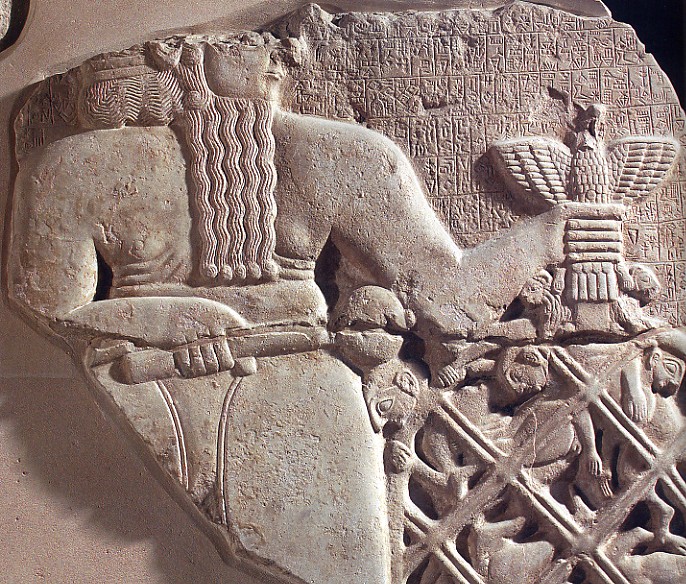
? |
|
Steele of Eannatum: God register- Sumerian art, ca. 2500- God is bigger than Eannatum, to represent his even greater significance and importance.- Has a frontal eye- He is buxom, represents his luxuriousness, and wears a royal bun.- Holds a net sack: filled with the enemies who violate the border- These steeles were planted around the city so that people who would go to the border would see this marker and be warned of the consequences. |
| |
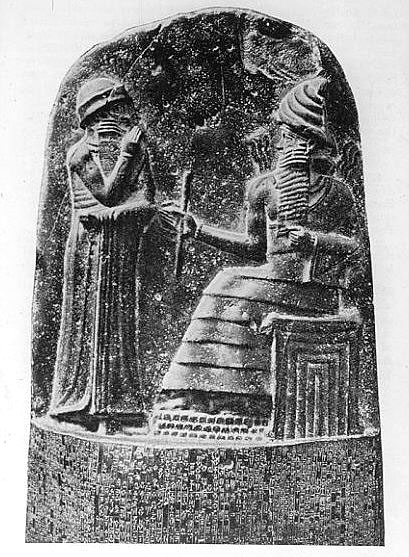
? |
|
Steele with Law Code of Hammurabi- Babylonian art, ca.1780 BCE- Singular slab of stone, most of which is covered in cuneiform: the written word on his law code on how he approaches a societal law)- Comprises of property laws, inheritance, crimes, etc.- Placed in the temple of the sun god- Presents two figures in hierarchical: 1 standing and 1 sitting on a throne. Seated figure (who is proportionately bigger) is God and he wears a crown of bull horns (symbol of power). His foot stool is of mountains (symbolic of his lofty divinity) - Hammurabi is approaching god, and god is handing him a measuring tool (rope) --> Ham. is doing god's bidding and that god is giving him the right authority, power, and right to judge and measure people's acts.- Justifies that his laws have a divine origin and that they much be followed. |
| |
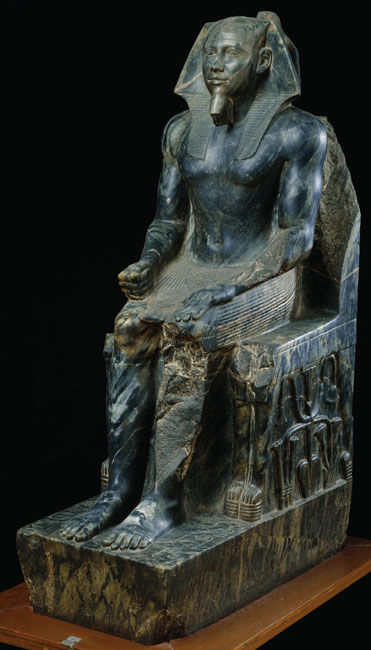
? |
|
Statue of Khafre- Egyptian art, ca. 2520- Carved from stone and scaled to roughly life size.- The side of his seated throne - hieroglyphics (one hieroglyphic presents papyrus and a lily = symbolic of the unification of upper and lower Egypt. He is the ruler of ALL of Egypt. - Hawk: symbolic of the Sun God. It hugs the head of the king to show his close divinity.- Face is symmetrical and youthful. No flaws or lines.- Broad shoulders and narrow hips = ideal body- Compact statue --> make as durable as possible |
| |
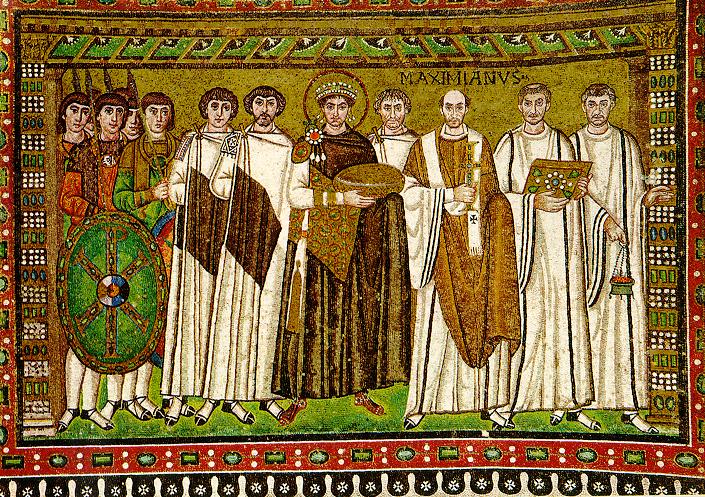
? |
|
Justinian and Attendants - Byzantine art, ca. 526- Mosaic in San Vitale at the apse- Depicts the ruler who is also a divine ruler. At his left are his civil attendant and to his left are the church authorities. |
| |
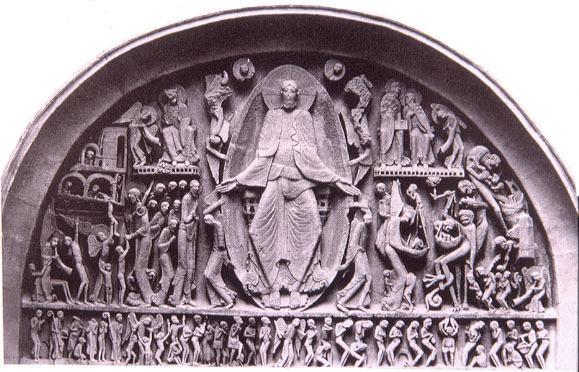
? |
|
Last Judgment on the Tympanum of San-Lazare on Autun Cathedral - Romanesque art: ca. 1120 by Giselbertus- Cathedral said to house the relics of Lazarus- Christ is elongated, unhuman, and other worldly. He is in hierarchical scale and is angled. Not realistic is under a linear pattern. - Depicts the second coming of Christ and the separation of the saved and the damned- Was a means of suggesting to pilgrims of what it takes to be saved (to donate money to the church, to take pilgrimages- To Christ's left is the damned and they are succumbed to eternal torture and torment by demons. They are having their souls weighed for the worst.
|
| |
|
Byzantine Art style |
|
- Circa 4th century til the fall of Constantinople An "abstract", anti-naturalistic approach so that everything held a spiritual and symbolic air. |
| |
|
Basilica |
|
Formerly used in Roman architecture as a venue to political events. But later on used for religious purposes |
| |
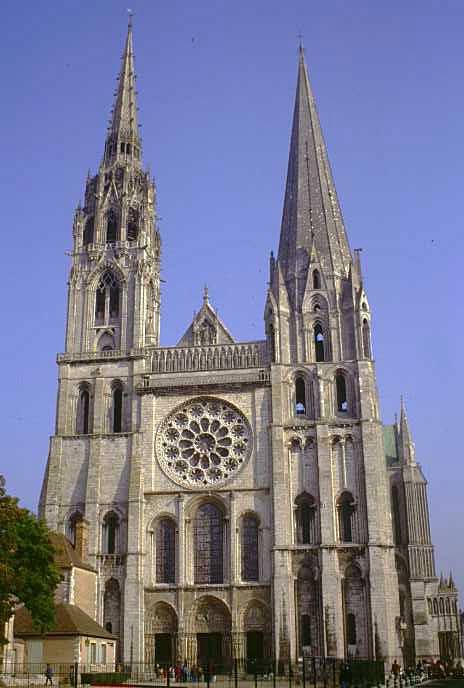
? |
|
Chartres Cathedral - 1134, rebuilt in 1194- GOTHIC ART- Used to be Romanesque structure before the fire. - Housed a relic of the silk veil of the Virgin Mary, made it a very important pilgrimage destination.- Rose window: a feature of the facade that was carved from the outside but rendered a spiritual and ineffable light through the inside stained glass. - Has a sculplture of the second coming of Christ on the tympanum. Difference, no damnation scene and Christ looks human therefore more identifiable and on a normal scale. More welcoming and less intimidating (interested in greek philosopher, Aristotle who believed that the body and soul were essentially good.)- |
| |
|
Chartres Cathedral's ribs/ very narrow columns |
|
o
All carved out of the wooden piece. The thin
columns turn into the ribs on the ceiling,
§
On either side of the column there are strained
glass windows.
o
How are the arches’ weight carried by just a
level of glass?
§
Supported by the exterior flying buttress. They
reinforce the building and helps keep the building up. |
| |
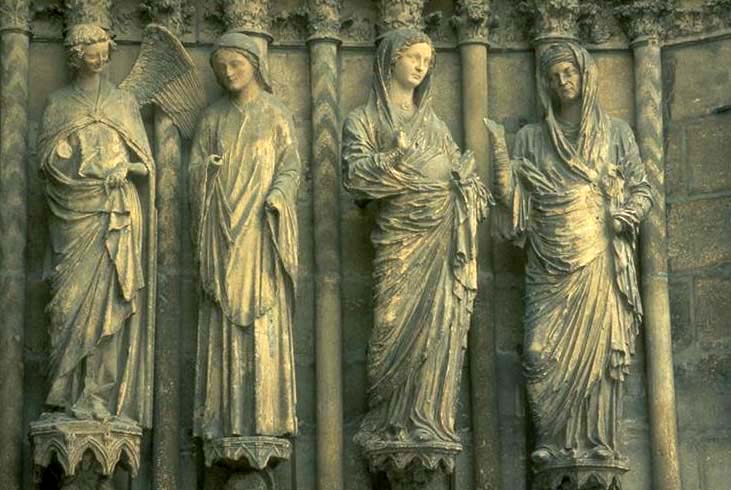
? |
|
Reims Cathedral, "The visitation"- 1230- -
they are not column tube-like figures like in
Chartres, these two women are interacting with each other. Virgin Mary with her
cousin, Elizabeth
o
In the bible—the angel who told Mary that she is
with child and told her that her cousin Elizabeth (a cousin who is well past
the child bearing years) Elizabeth says that Mary is “the mother of my Lord”
o
Mary is standing contraposto; you can see it
even through her drapery. Her face is serene, her hair is perfect, flowing
drapery (like the classical sculpture: beginning to look to the past) |
| |
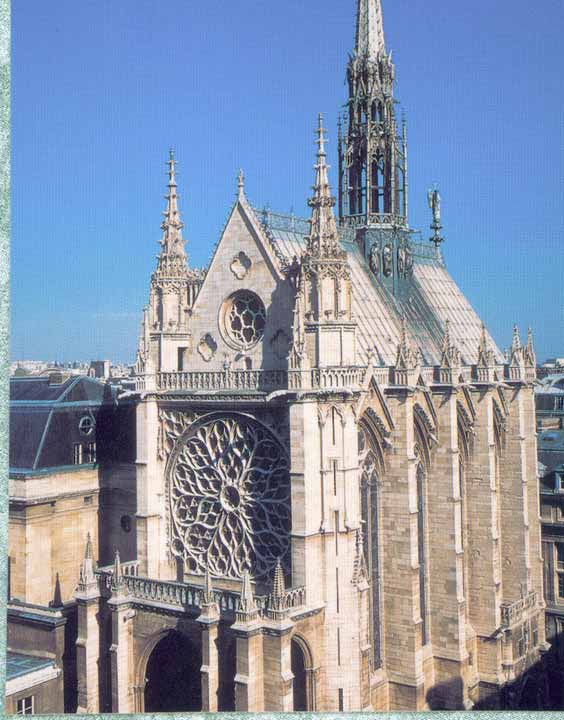
? |
|
Saint Chappelle, Paris- 1230- -
Means “the holy chapel”
-
Built by the king of France to be part of his
palace. The ground floor was public, but the second floor was private and
belonged to the palace.
-
King: Louis IX also called “Saint Louis”
o
He went on two crusades to take back the holy
land from the infidel.
o
He liked relics: he held a huge collection of
them.
§
He bought Christ’s crown of thorns from
Constantinople à
he didn’t want the church to hold the relic so he kept him for himself.
-
Has more glass than it does wall à
it’s like a huge reliquary. The entire structure is a reliquary.
-
Glass windows actually have scenes of
contemporary events: San Louis and his brother taking possession of the Crown
of Thorns.
o
Biblical history comes right into the present.
San Louis becomes the reign and heir of Christ. This is an assertion of his
power and his authority.
o
The crown: on the stain glass it looks like the
Grecian wreaths that were given to victors.
§
The crown of the thorns not an image of shame
but a symbol of victory. |
| |
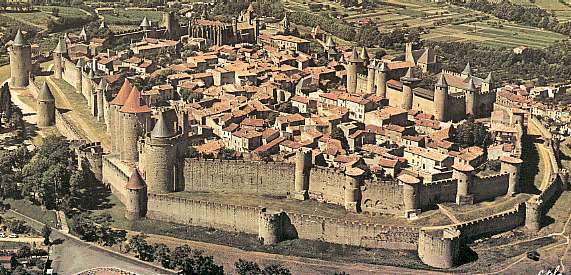
? |
|
Carcassonne- 12-13th century, Neo-Gothic architeture - Fortified french town |
| |
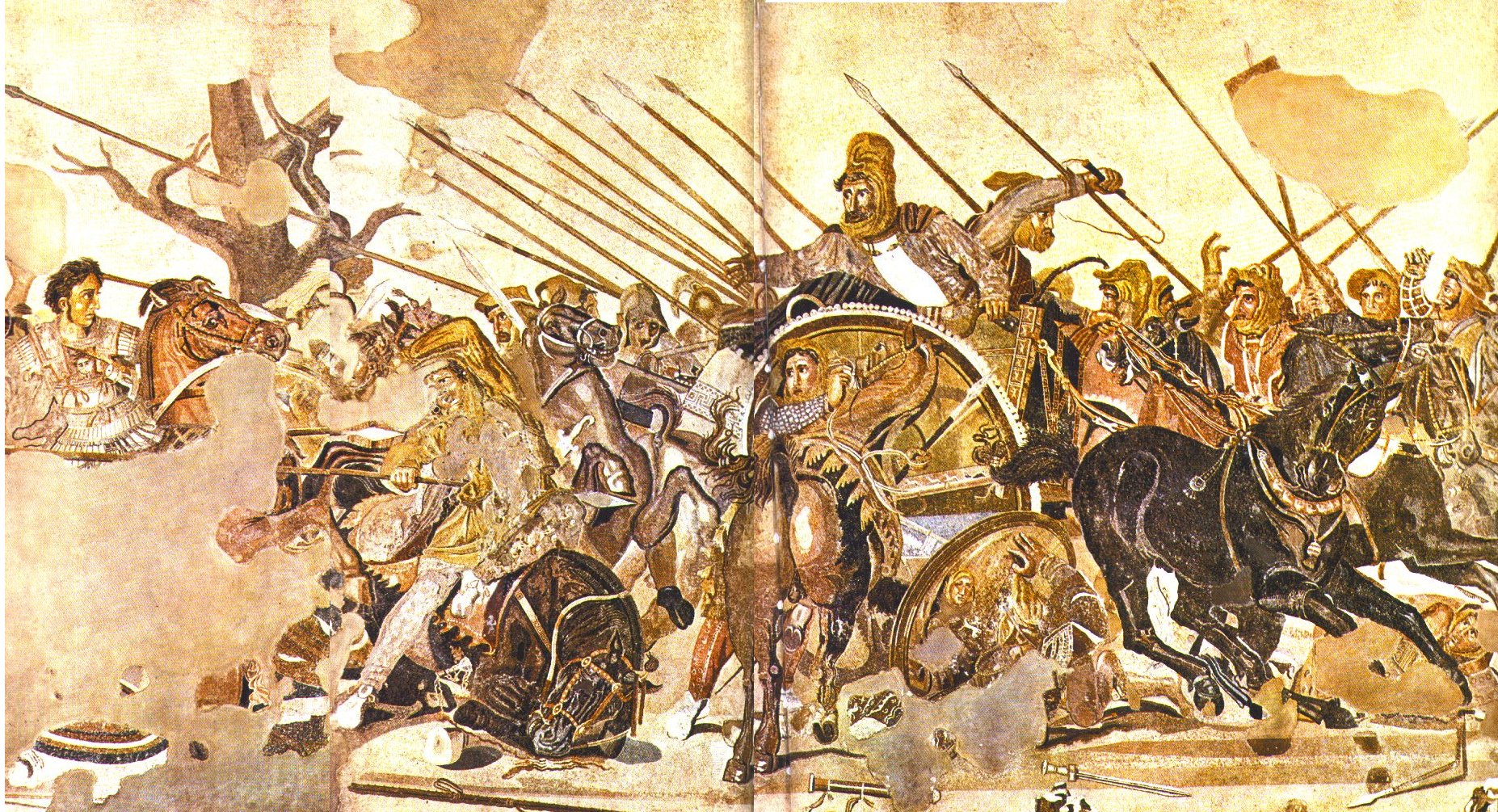
? |
|
Battle of Issus- Late Classical Period 310 BCE- A mosaic of Alexander - Alexander of Macidonia vs. King Darius of Persia- Chaotic and violent war depiction - Darius takes personal charge of his army. He is represented with emotion and turmoil = new way of depicting the enemy as human beings as well. As opposed to barbarians or beasts.- |
| |
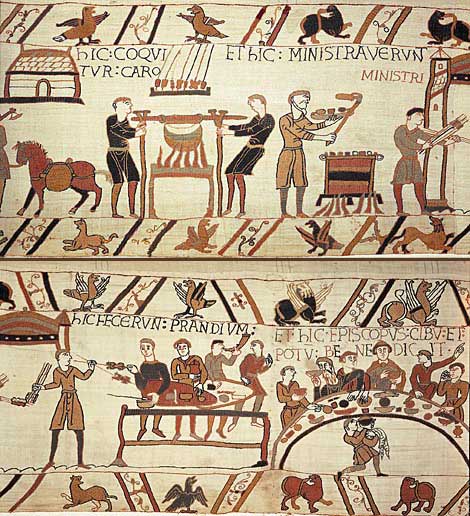
? |
|
Bayou Tapestry- Romanesque, 1070- o
It is an embroidery à make on pieces of
linen. There are eight pieces that are stitched together
o
235 feet long.
o
Possibilities: in a great hall of a castle, in a
cathedral.
o
It tells the story (starting 1064) à
King Edward (king of England) he was getting old and didn’t have an heir so he
summoned his brother-in-law, Harold. He send Harold on a mission to go across
the English channel to tell Edward that he
§
How to make binding, solemn oath? à
Make the oath on reliquaries. Harold and Edward make an oath where Harold
recognizes Edward are the sovereign heir.
o
Like the Column of Trajan à
a long narrative. |
| |
|
Priene |
|
Ancient Greek city where roots for Hellenistic art and architecture arose. - 4th century BCE- |
| |
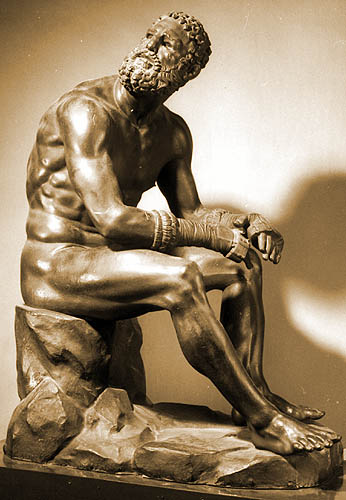
? |
|
Seated Boxer- Hellenistic art, ca. 50 BCE- |
| |
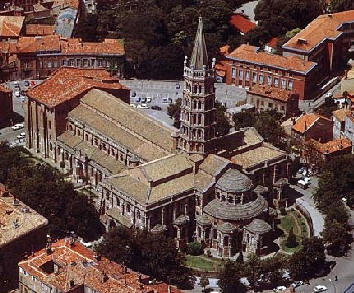
? |
|
San Sernin- Romanesque period, ca. 1130- Grave over an early Christian martyr - -
In Toulouse. This is a church designed to
attract the thrones of pilgrims traveling.
-
It is a basilica church and is in the shape of a
cross (has a transcept)
-
A big tower: it is suspended over the church. It
is a beacon/landmark that pilgrims are able to locate and find.
-
Aisle that goes behind the apse: ambulatory
o
You can have worshippers in the church and also
have tourists/pilgrims looking around the church at the same time without
disturbing one another.
o
Made for the pilgrims and the traffic flow.
-
Radiating chapels
o
You’re giving the pilgrims something more the
look at
o
May have secondary alters, other secondary
relics à
giving the pilgrims a lot of things to look at, different saints to pray to,
and different boxes for donation.
-
Façade is made from brick. Is supported by
buttresses.
-
Stone vaulting vs. timber roofs
o
Timber roofs are more prone to catching fire
because of the candles
o
Stone vaulting à acoustics: stone would
carry the sounds and music across the church to make it seem ethereal and other
worldly
o
How to support the weight of the stone vault?
§
With piers.
§
Makes way for a second story for where the over
flow over people could be during a crowded church.
-
Wants to appeal to the senses à
heightened senses to make it seem extremely spiritual and otherworldly
o
Incenses, acoustics, beautiful golden images
▪ Revival of relief sculpture (part of or attached to the
church) à
usually found at the door, the first thing they see before the entrance the
sacred space.
-
Usually found on the tympanum. |
| |
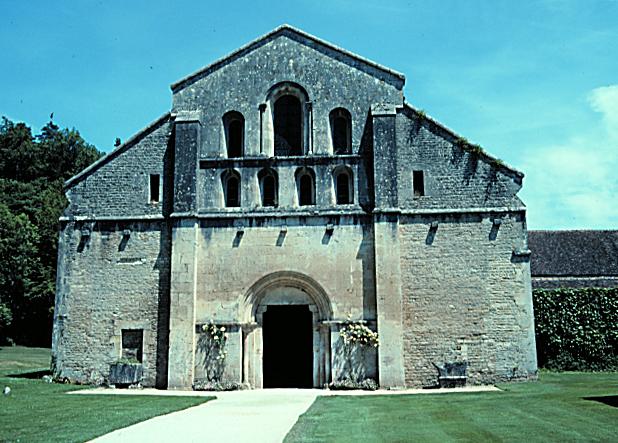
? |
|
Fontenay Abbey- Romanesque, ca. 1130- A cistercian contemplative monastic order.- |
| |
|
Saint Bernard of Clairvaux |
|
-
Saint Bernard of Clervo: he wrote a book which
was a critique of religious art.
-
Basic objection: there are monastaries that are
made to attract the world and to get tourists
o
Art aims to attract donation
§
If you’re a monk, art is a spiritual
distraction. They’re not reading scriptures but are distracting themselves with
worldly things
o
All this money should be for serving the poor
and not making these golden statues and images.
-
Building doesn’t have a tower: doesn’t aim to
attract people.
o
It is very plain: the door has an arch there but
no sculpture. It is forbidden
o
Inside: there are columns, but the capitals are
very plain
o
No gallery/ no secondary storage for people.
o
Use humble materials. Wood or iron or copper.
Never gold, silver, or jewels. |
| |
